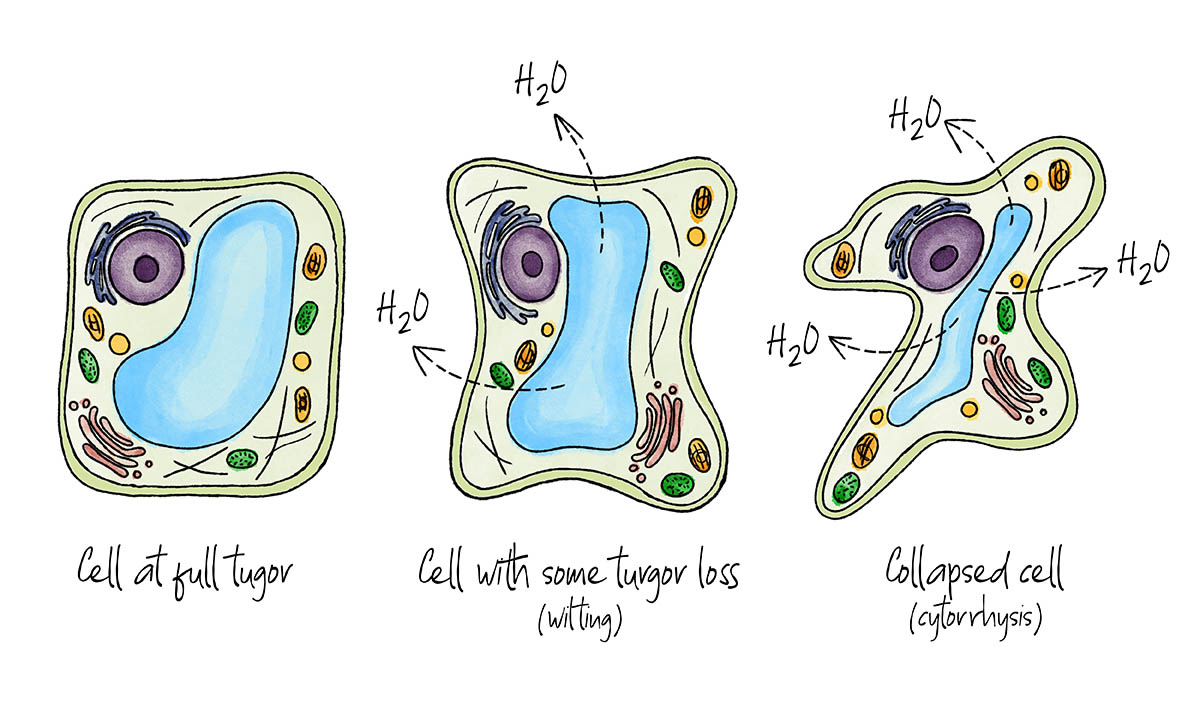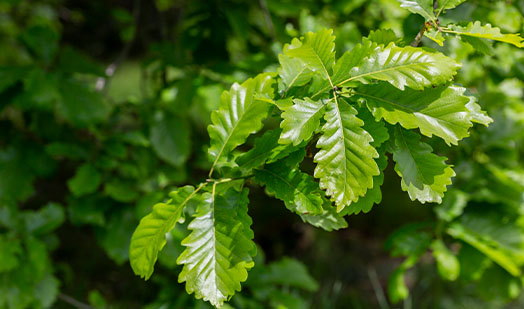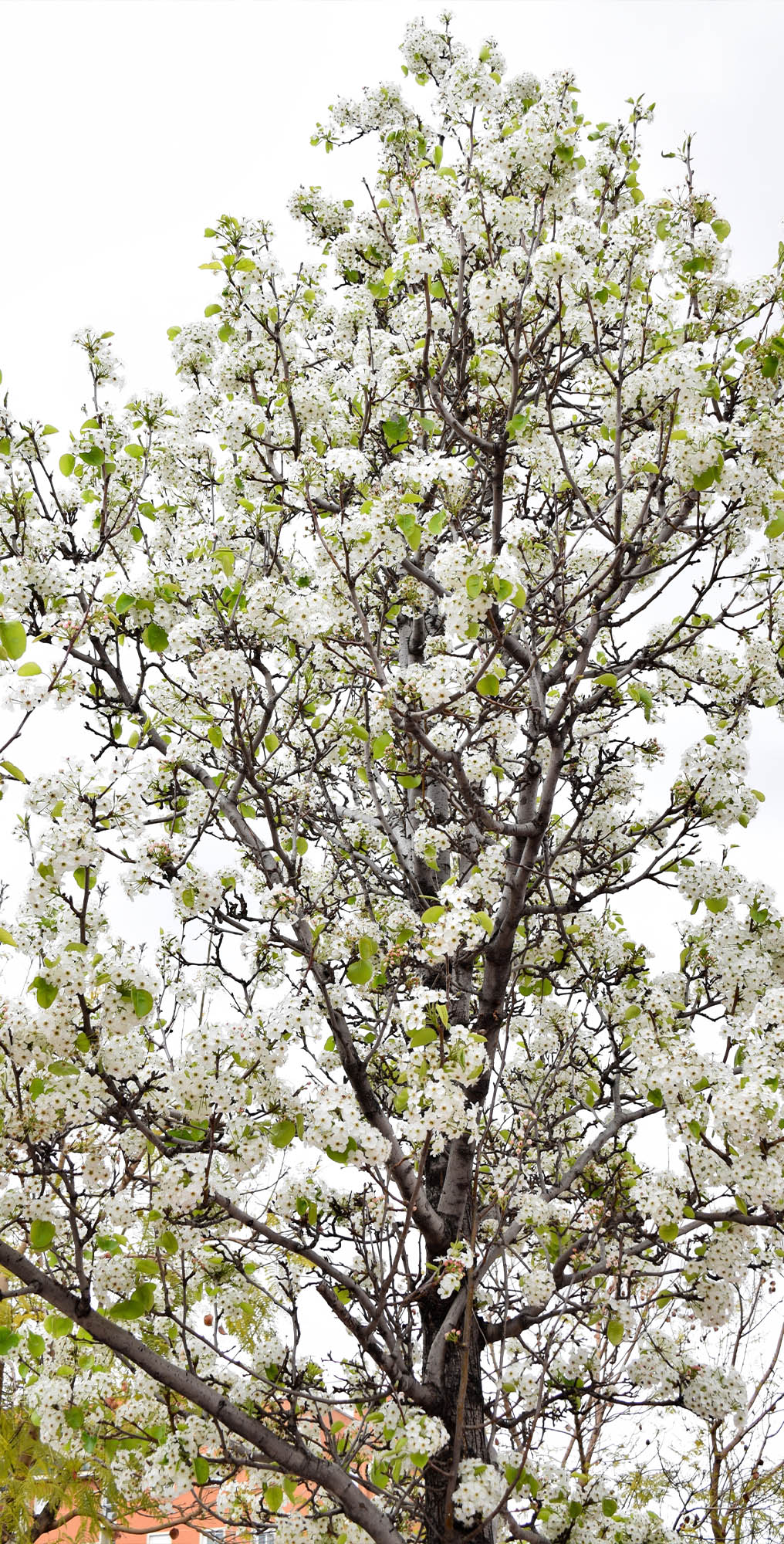The science of drought tolerance
In the changing climate of the UK, there is an increasing emphasis on plants resistant to long periods of drought when designing green spaces. It can, however, be unclear what makes a plant tolerant to a lack of rainfall or irrigation. In the landscaping industry, whenever we refer to a plant’s drought tolerance, we often use a scale of absolution, either referring to a plant as ‘yes’ or ‘no’ when it comes to its ability to survive dry conditions. Once one understands the science behind the way in which different plants deal with drought, it becomes clear that a ‘yes’ or ‘no’ does not give a full picture of how much or how little a plant can tolerate dry conditions. The truth is that drought tolerance is much more of a spectrum than a simple binary answer. There are plants which are far more tolerant than others, or plants that lie somewhere between the two extremities, being either moderately tolerant or intolerant of drought. In this blog, we’re going to look at the importance of drought tolerant species, as well as discuss the specific elements what makes a plant drought tolerant, how plants react to a lack of water, and how we measure a plant’s ability to withstand dry conditions.
Why is drought tolerance important?
Historically in the UK, the temperate climate and abundant precipitation has usually provided enough water and protection from direct sunlight for most plants to thrive with little maintenance. For much of recent history, this has been the case, and our native plant life has evolved and adapted to survive within these conditions. Due to climate change, however, these conditions are already beginning to rapidly change. Research carried out by the Crowther Lab in Switzerland has suggested that by 2050, London will have the same climate as present day Barcelona, a city almost 1000km closer to the equator. London is expected to see an average temperature increase of around 5.9°C, and with it, much more extreme weather events, such as heatwaves and droughts. It is likely that, if left unchecked, much of our native plant life will struggle to cope with the sudden change in climate, resulting in widespread species lost, and a general reduction in well-being of green spaces.
This is why, in order to ensure the long-term survival of landscapes and gardens, planting with an emphasis on drought tolerance will be key as we move into the future. Despite their better suitability to native wildlife, in the future, many species of British native plants will no longer be able to tolerate the future climate, having not evolved to cope with soaring temperatures and long periods with no rainfall. The Botanical Society of Britain and Ireland (BSBI) recently published an extensive report on UK plant life, which stated that in the last 29 years, 53% of Britain’s native plants have declined, due to a number of factors, including climate change.
Additionally, long, hot summers with little rainfall will create a strain on the water supply for human consumption, with more frequent hosepipe bans and rationing being expected in the coming decades. As a result, creating landscapes that require little to no additional irrigation will be crucial to ensuring that we have thriving green spaces in the future, and to ensure that water is properly conserved.

Parc Guell – Barcellona
Drought avoidance vs Drought tolerance in plants
When it comes to a plant’s ability to withstand a lack of water, there are two different strategies that are employed. These are drought avoidance, and drought tolerance. Drought avoidance is generally the first level of response in a plant to a lack of water availability. The goal with drought avoidance is to avoid water loss within the plant, attempting to maintain full water potential within the cells of the leaves and stem. Water potential is a measure of the status of water within the plant. When a plant is at its maximum water potential, it is able to maintain its rigid structure within the stems and the leaves. This is because the water will exert an outward pressure on the walls of the cells, which is measured in megapascals (MPa). As long as a plant maintains this water potential, it will be able to function normally, even if there is no additional water available for the plant to absorb. There are two distinct sub-categories of drought avoidance strategies: attempts to maximise the absorption of water from the soil, and attempts to economise the water within the plant itself, preventing excess water loss, and prioritising water potential. Access to water is often maximised in dry soils by an extensive expansion of its root system, in an attempt to absorb as much of the available groundwater as possible. Once the soil moisture has been exhausted, a plant will then often begin to conserve its existing water potential. This is achieved in a few different ways. Hereditarily, plants will develop waxy foliage, or small, fine hairs, in order to prevent overheating, and thus reducing the required water expenditure via transpiration to keep the leaves cool. As a response to a lack of water availability, plants will reduce water loss by closing the stomata in their leaves. This will halt photosynthesis, which uses water in order to create glucose for the plant. Plants will also minimise new growth in this time, and conserve its energy. They will also minimise the surface area of their foliage, by limiting new foliage growth and shedding existing leaves.
The difference between drought avoidance and drought tolerance is that with drought tolerance, the plant is already at the point where water potential loss is inevitable, and it has exhausted all options of drought avoidance. Once water loss has reached a certain level, the plant will begin to exhibit more visible levels of drought stress. The loss in water will result in a reduction in the pressure exerted on the outer cell wall, which is responsible for a plants’ rigid structure. We’re able to see this pressure loss with the naked eye, in the form of wilting. In sustained period of drought, the cells will continue to lose water, and cell pressure, until the cells eventually collapse and die. Drought tolerant plants are defined as those which are still able to function during water potential loss, without sustaining serious and irreparable damage as a result. This tolerance comes from plants which have evolved to survive in dry conditions, in regions with little rainfall and a scarcity of available water. Drought tolerant plants often have more robust cellular structure, which has adapted to better withstand lower water potentials and a loss of internal pressure. Additionally, the cells are also able to make an osmotic adjustment, where they generate solutes within the cell, reducing water potential and allowing it to maintain function. Every plant has its limit however, and eventually, the plant will begin to wilt and wither away. The point at which the plant is unable to withstand the pressure loss without irreversible damage is known as the leaf turgor loss point. This is when the cell is no longer able to exert a positive pressure, and the cell begins to collapse inwards, causing wilting.

Diagram showing turgor loss in a leaf cell as water potential decreases.
Drought tolerance as a scale
As we are able to quantifiably measure the point at which a plant can no longer stand the drop in leaf turgor before it causes irreversible damage, we are then able to build a solid comparison within all different species of plants, and from that develop a spectrum of drought tolerance, on which all plants lie. From this we are then able to create an average leaf turgor loss point, and from that, identify which plants fall above the average tolerance, and which fall below it. This is where we draw our traditional binary response to drought tolerance, where plants are either ‘tolerant’ or ‘intolerant’. This isn’t always the best way to define a plant’s drought tolerant abilities however. For example, in the data from which we’re drawing (Royal Botanical Gardens Kew Tree Selection Guide, 2023), Acer campestre (field maple) has a leaf turgor loss point of -3 MPa, which is above average within the range of trees measured. Acer campestre is considered ‘drought tolerant’ by most sources, yet has a maximum leaf turgor loss which is almost 30% lower than the most tolerant species of the data set, Quercus coccinea (-4.2 MPa).
From this, it would then be inaccurate to suggest that the drought tolerance of these two species are of a comparable level, particularly when the lowest tolerance of the dataset is Magnolia denudata, at -1.7 MPa. Yet, despite being on the border of what is considered tolerant in one study, the Journal of Plant Ecology studied 32 native species in central Europe, and the average turgor loss point was -2.3 MPa, putting Acer campestre well above the average drought tolerance of the plants surveyed in that study.
Whilst this approach is relatively new and yet to have been measured widely among plant species, the research conducted by Kew Gardens amongst others, has given us a glimpse into the future of determining the drought tolerance of various plants. Currently, the botanical gardens at Kew are collecting seeds from the Romanian Steppe, an area with similar climate conditions to those predicted in the UK’s future. Their plan is to test these plants for their turgor loss point, to determine their suitability to the UK’s future climate.

Source: Royal Botanical Gardens Kew – Tree Selection Guide
How is the turgor loss point measured?
In order to measure the turgor loss point, scientists use a vapour pressure osmometer (VPO). This device determines the concentration of osmotically active particles in a solution. There are two chambers to the osmometer, one which is filled with a solvent containing the polymer we want to measure, in this case the plant cells, and the other chamber contains pure solvent, and acts as a control. The test then conducts several measurements of the vapor pressure in each chamber, and determines the average molecular weight of the polymer inside the chamber. An equation first established by Bartlett et al (2012) then determines the leaf water potential at turgor loss point.
Above average drought tolerance (measured by turgor loss point MPa)
From the data collected by the Royal Botanical Gardens at Kew, as well as data collected by the Journal of Plant Ecology on European native species, we have compiled a list of our recommendations of plants and trees for drought tolerance, as indicated by their turgor loss point:
Quercus robur (-2.68 MPa Source: JPE)
Known colloquially as common oak, this UK native deciduous tree can reach between 20m and 40m in height, with rounded, lobed foliage that turns reddish/brown in autumn. Produces yellow/green catkins in spring, followed by green acorns. Considered drought tolerant due to its deep root structure. It can tolerate an above average loss of turgor before the leaf cells fail.
Euonymus europaeus (-2.77 MPa – Source: JPE)
A deciduous, spreading shrub with ovate, narrow foliage that starts out green and turns yellow or red in autumn. Can be grown into a hedge or even a small tree, and can thrive in most conditions. It has a particularly low turgor loss point when compared to other European native plants.
Acer campestre (-3 MPa – Source: RBG Kew)
A deciduous UK native tree with a compact crown of foliage, and a total growth height of over 12 metres. Its leaves turn to yellow and red in autumn. It produces small green flowers in spring, followed by green fruit in summer. Can handle most growing conditions, and is notably versatile, for drought, cold, pollution, and areas prone to waterlogging.
Pyrus calleryana ‘Chanticleer’ (-3.2 MPa – Source RBG Kew)
A conical deciduous tree with waxy, dark-green, ovate leaves, which turn to brown in Autumn. Produces clusters of white flowers in spring, and brown berries in autumn. Well regarded for its tolerance of drought, and its foliage can withstand an average turgor loss well above the average before cell collapse.

Quercus robur

Pyrus calleryana ‘Chanticleer’
Defining the point of drought tolerance
Deciding if a plant is drought tolerant or not, as evidenced by the vastly differing points at which studies consider a plant to be so, is not as straightforward as it might appear on the surface. One of the key factors to consider is the extent of the drought conditions to which the plants are being subjected. Another factor is the sample of plants from which you’re determining drought tolerance. Plants from Northern Europe, where typically there is more abundant rainfall and less drought, will on average not have an evolved tolerance to drought, as it is not essential to survival. In the mediterranean however, where hot summers and periods of drought are common, the resistance to drought will be more prevalent. This means that a plant with a lower than average turgor loss point amongst Northern European plants won’t have a lower average turgor loss point amongst mediterranean plants. This is why context plays a key factor in determining a plants suitability for a planting location, and why drought tolerance shouldn’t be looked at as a simple ‘yes’ or ‘no’ answer, rather an approach to plant and tree selection based on the current climate, and the climate on the future.
For more information on planting for drought tolerance, speak to the G Team today.

